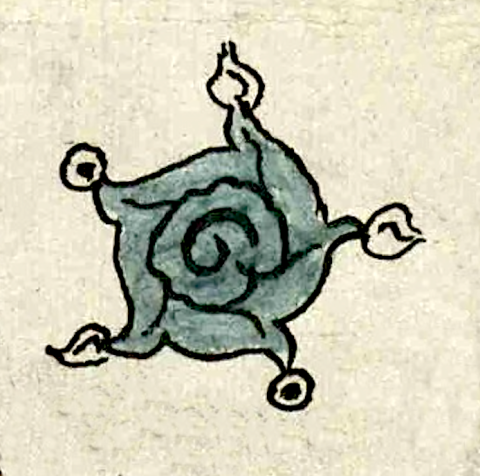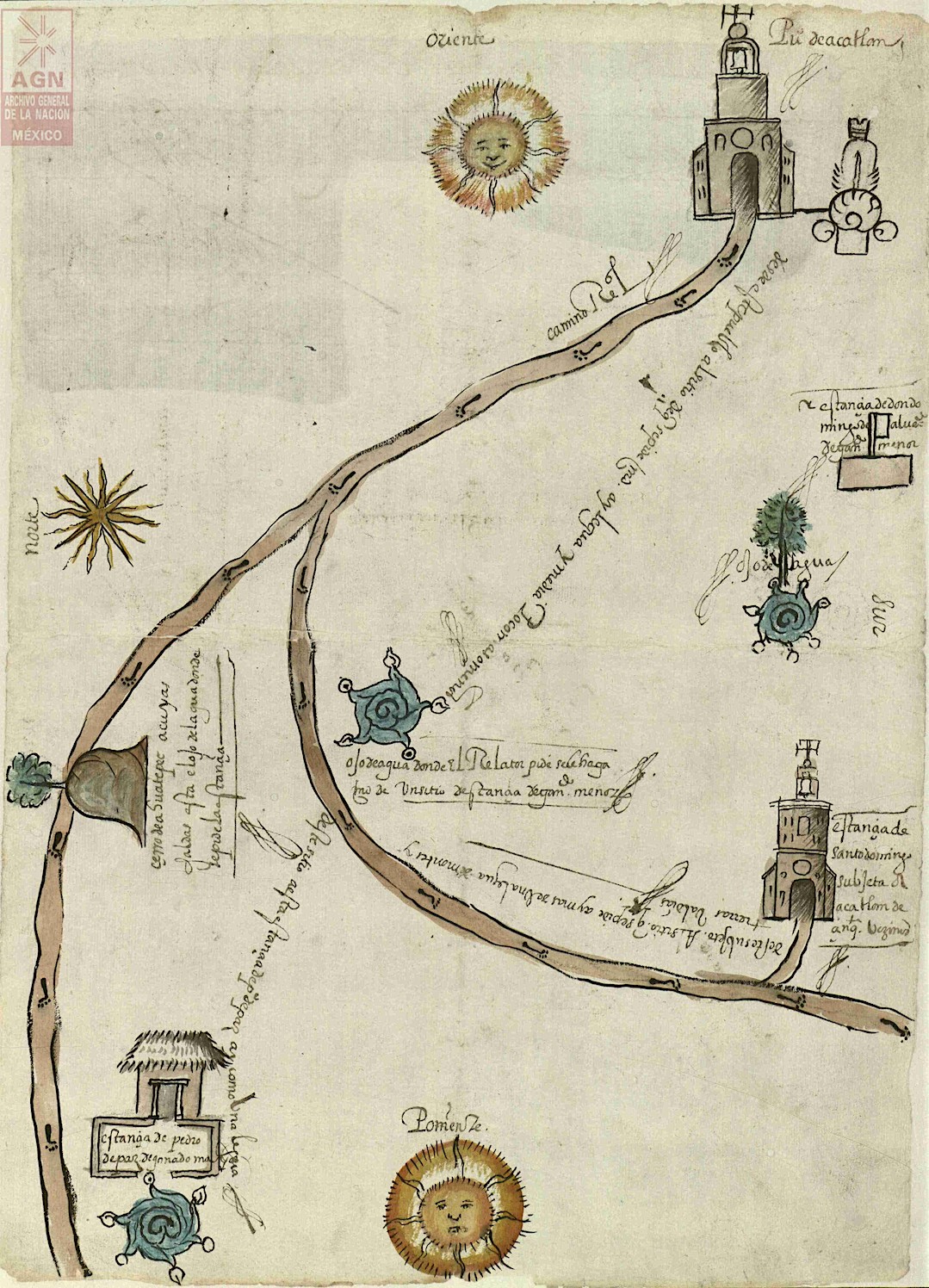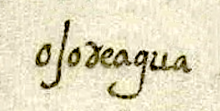ameyalli (T2680:19:9r)
This simplex glyph stands for a spring located at the foot of a hill called Ahuatepec in the vicinity of the pueblo of Acatlan, Tulancingo. It is glossed on the map in Spanish as an ojo de agua (see below), but we think it likely that a Nahuatl speaker would read the glyph as ameyalli (if not simply as “water,” or atl). The spring is outlined in black and filled with blue pigment. Two of its five projecting nodes are tipped with small circles with black dots in the centers representing droplets, precious gems, or both. The other three end in shells. The spring is shown as a swirling body of water thanks to the black lines found within it, including a black spiral vortex at its core.
Robert Haskett
In 1564 control of the spring was a significant element in the request submitted to the viceregal authorities by the Spaniard Melchor de Carejas for a grant of a sitio de estancia para ganado menor (site for a small livestock—in this case cabras, goats). It is no wonder that he was attracted to the property in question, since it had a reliable water source. One of three springs painted on the map, the one involved in the grant is shown as being located to the south of Ahuatepec and across a road (painted brown with black human footprints inside of it at intervals; see the historical contextualizing image). The request was investigated and witness testimony was taken, all of which characterized the proposed goat ranch as posing no threat to the wellbeing of the people of Acatlan or their agricultural lands. The pueblo’s gobernador at the time, don Domingo de Alvarado, was informed of these proceedings, but neither he nor any other Indigenous town council members seem to have resisted the grant.
Robert Haskett
ojodeagua
ojo de agua
Robert Haskett
1564
Robert Haskett
springs, ojos de agua

ameyal(li), spring, https://nahuatl.wired-humanities.org/content/ameyalli
el ojo de agua
Robert Haskett
Single-page codex, Archivo General de la Nación, México, Ramo de Tierras Vol. 2680, Exp. 19, Fol. 9r, Acatlan, Tulancingo.
The Archivo General de la Nación (AGN), México, holds the original manuscript. This image is published here under a Creative Commons license, asking that you cite the AGN and this Visual Lexicon of Aztec Hieroglyphs.








